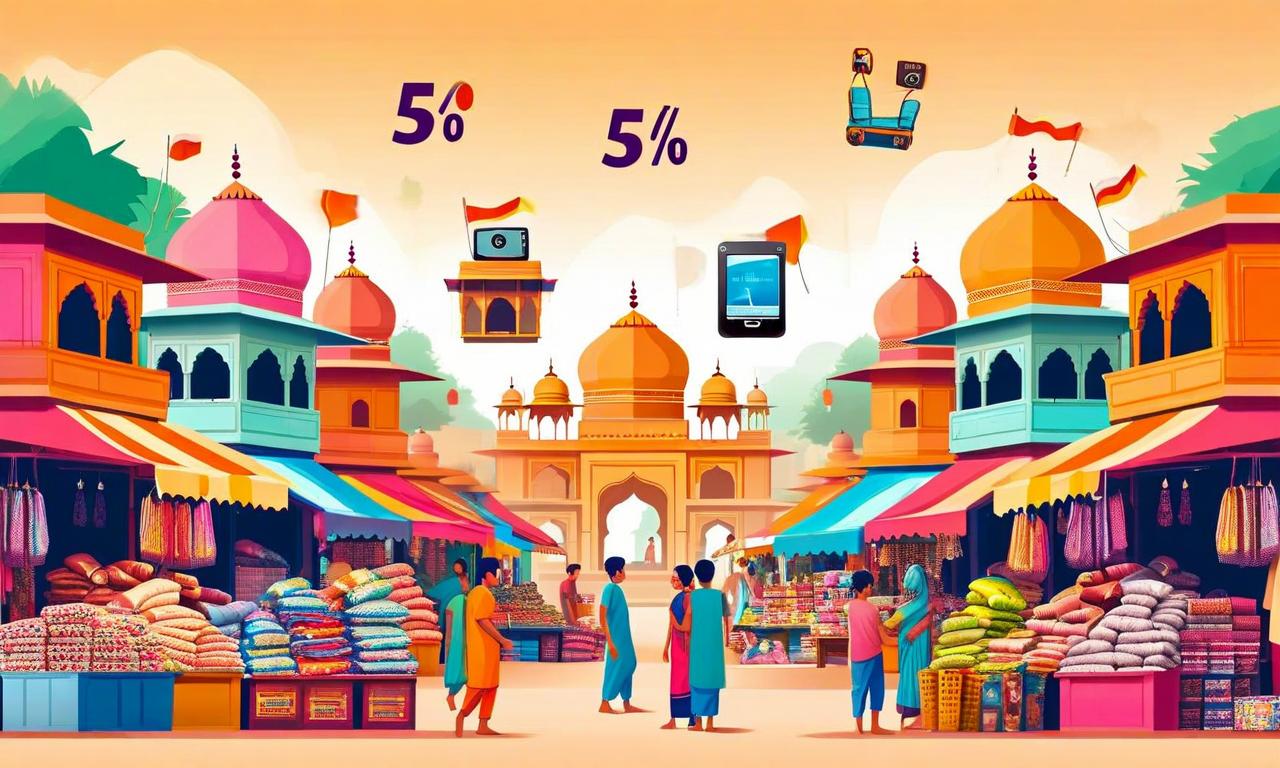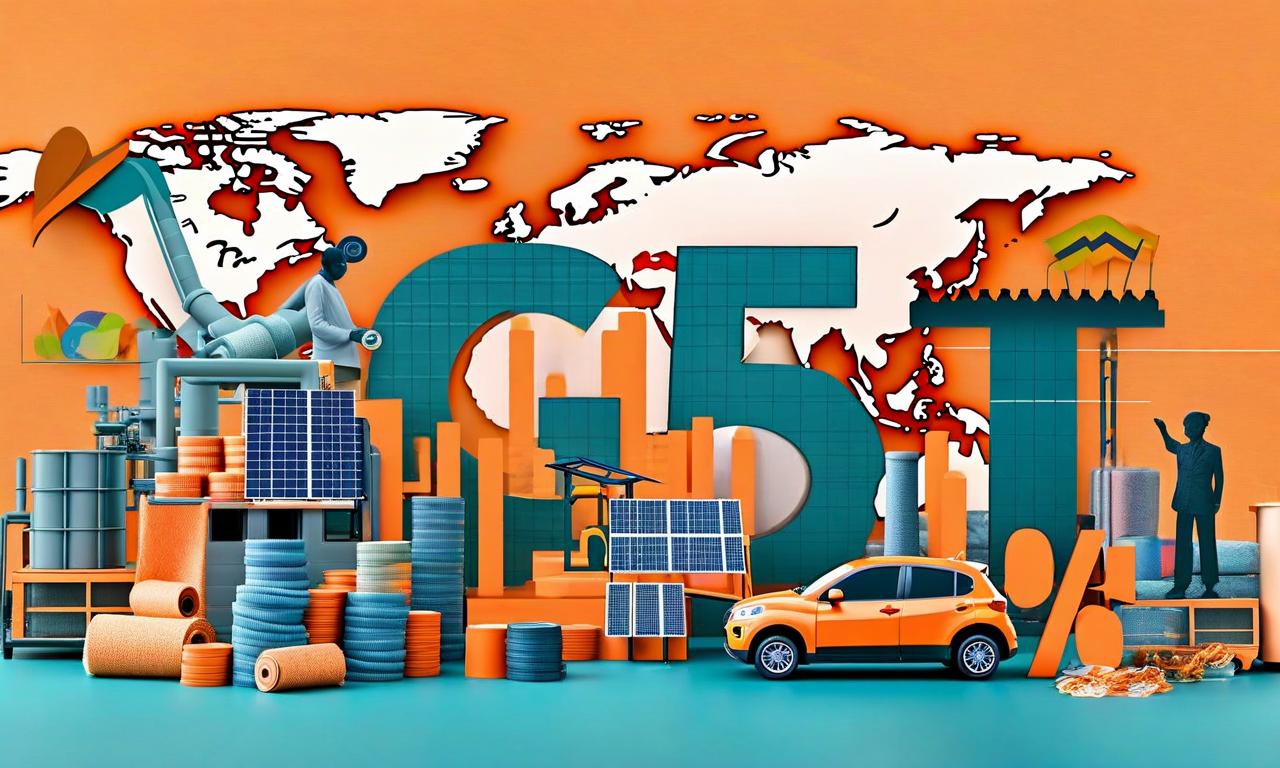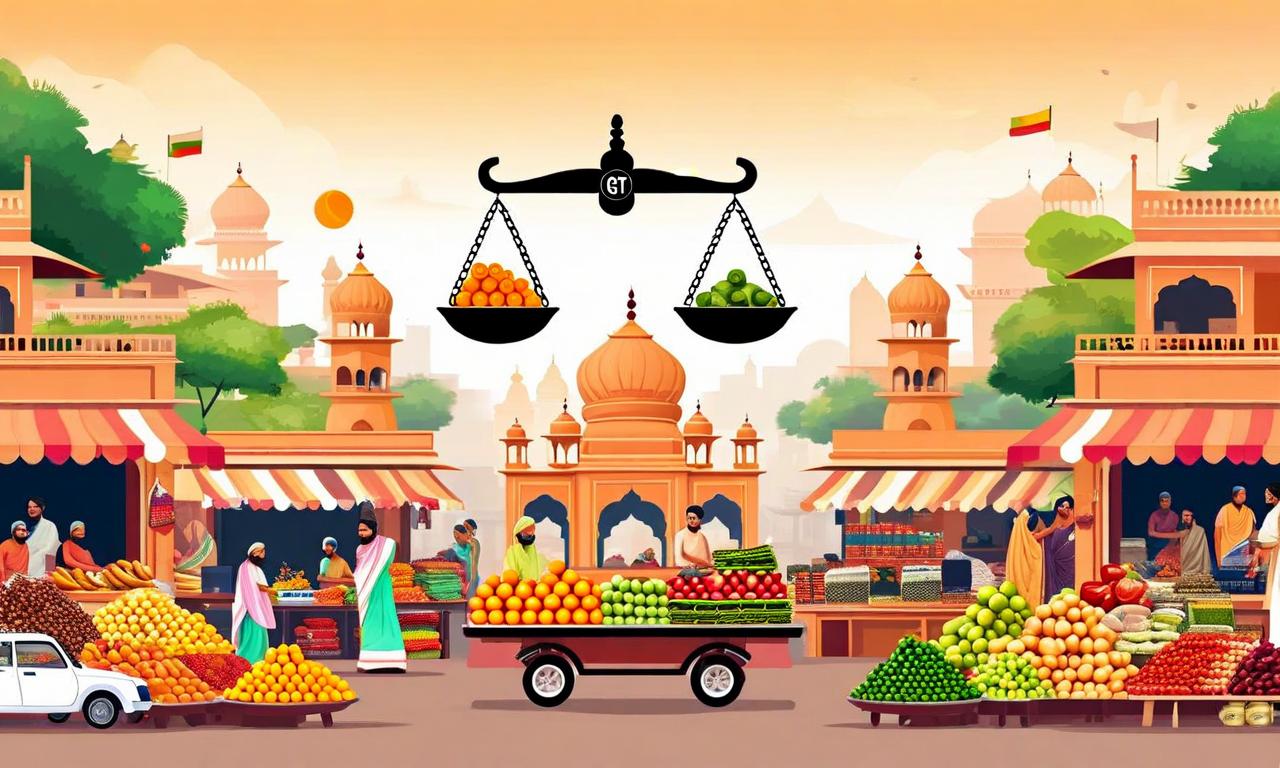GST 2.0: Major Overhaul Brings Rate Cuts Across Multiple Sectors
India has implemented a significant reform of its Goods and Services Tax (GST) system, dubbed GST 2.0, effective September 22. The new structure simplifies the previous four-slab system (5%, 12%, 18%, 28%) to a two-rate system of 5% and 18%, with a 40% rate for luxury items. This change is expected to benefit various sectors including automotive, banking, construction, FMCG, consumer durables, hospitality, insurance, logistics, and footwear. The reform aims to boost consumption, simplify compliance, and potentially drive economic growth.

*this image is generated using AI for illustrative purposes only.
In a significant move to simplify India's tax structure, a major overhaul of the Goods and Services Tax (GST) system took effect on September 22. The new system, dubbed GST 2.0, introduces substantial rate changes that are expected to impact various sectors of the Indian economy.
New GST Structure
Finance Minister Nirmala Sitharaman announced a shift from the previous four-slab structure to a simpler two-rate system:
- Previous structure: 5%, 12%, 18%, and 28%
- New structure: 5% and 18%
- A 40% rate reserved for high-end vehicles, tobacco, and sin goods
Sectors Benefiting from Lower GST Rates
Automotive Sector
Companies like Maruti Suzuki, Mahindra & Mahindra, and Tata Motors, along with auto ancillary firms, are positioned to benefit from lower GST rates. This could potentially lead to reduced prices for consumers and increased demand in the automotive market.
Banking and Financial Services
The banking sector, including players like ICICI Bank and HDFC Bank, as well as NBFCs like Bajaj Finance, anticipate benefits from increased consumption due to the revised tax structure.
Construction and Building Materials
Cement companies such as Ultratech and Ambuja Cement are expected to benefit from lower rates, which could aid volume growth in the construction sector.
Fast-Moving Consumer Goods (FMCG)
FMCG giants like Hindustan Unilever, Britannia, and ITC stand to gain from reduced GST on essential raw materials, potentially leading to cost savings or improved margins.
Consumer Durables
Firms like Voltas and Havells are set to benefit from rate cuts on air conditioners, TVs, and mobile phones, which could stimulate consumer demand for these products.
Hospitality and Insurance
The hotel industry gains from lower GST on room rents below Rs 7,500, while insurance companies benefit from zero GST on individual policies, potentially making these services more accessible to consumers.
Logistics and Quick Commerce
Logistics company Delhivery and quick commerce firms like Swiggy expect volume increases due to the simplified tax structure and potential boost in overall consumption.
Footwear Industry
Companies including Relaxo and Bata are set to benefit from lower GST on value products, which could lead to more competitive pricing in the footwear market.
Implications and Expectations
The implementation of GST 2.0 is a significant step towards simplifying India's tax structure. By reducing the number of tax slabs and lowering rates across various sectors, the government aims to boost consumption, simplify compliance, and potentially drive economic growth.
While the immediate impact may vary across industries, the overall expectation is that these changes will lead to increased economic activity, potentially benefiting both businesses and consumers. However, the full effects of this major tax overhaul will likely become more apparent in the coming months as businesses adjust to the new rates and consumers respond to potential price changes.
As with any significant policy change, stakeholders across various sectors will be closely monitoring the implementation and impact of GST 2.0 on their respective industries and the broader economy.



























